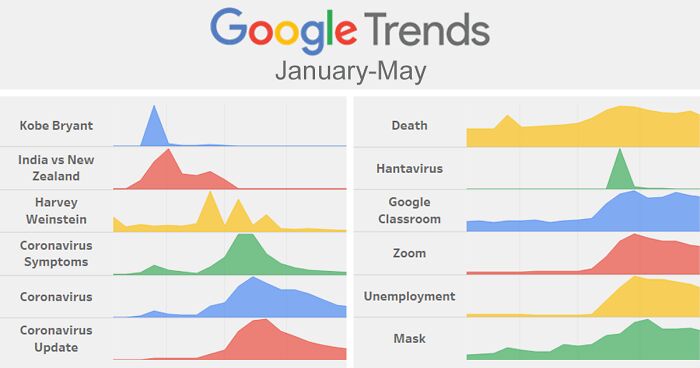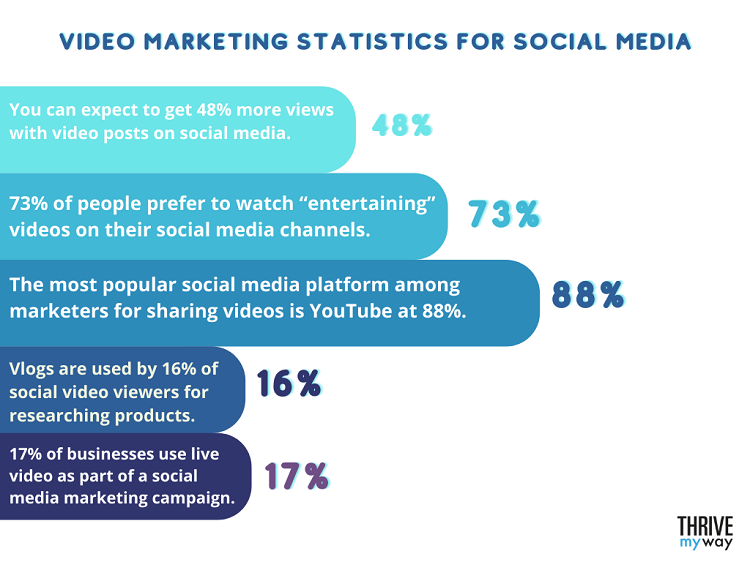
So, you have decided to launch your own digital advertising strategy. What's next? The article will take you through every step, from choosing your channel to research your audience. This article will also show you how to create a customer journey and split test your strategy. You'll then be able to determine if the new strategy is effective for your brand. You're not the only one who isn't satisfied with your new strategy. There are many other businesses asking the same questions: "How do you start a digital advertising strategy?"
Researching your audience
When creating a digital strategy for marketing, it is important to understand your audience. This can be done through quantitative research. This involves surveying large populations and producing statistical results. For example, to create an email blast for a certain audience, you must identify their problems and interests. You can also look at their past purchases to determine their buying habits. You can then target your marketing message to specific audience segments.
A successful digital marketing strategy requires you to get to know your audience. Without research, you'll be blind to their desires and needs. Research can help you to identify these issues and create personalized content for them. You can also predict their needs, which will help you become more efficient in your marketing. Here are some ways to research your audience.
Interviews: To understand your audience better, you can conduct surveys. You can ask existing customers via email, publish customer reviews on social media, and conduct interviews. These surveys will provide valuable insights into the personality of your audience. Then you can develop your digital strategy. It's important to research your audience, but it is equally essential to create a compelling campaign. You'll be able engage your audience and increase your sales.
Segmentation: By understanding your audience's preferences, interests, and lifestyle, you'll be able to tailor your messaging to them. Segmentation is a powerful tool to create stronger messages and connect with customers in a more personal manner. Adidas sent a specific email targeting women, while the clothing manufacturer categorised its customers by gender. Customers buy jeans in large numbers, so a survey asking them how they rate the retailer would result in an average rating of 8/10.
Choose your channels
It is essential to choose the right digital marketing channels for your product or services promotion. The primary goals, competition, budget, and other factors should guide your choice. Different channels have different results, so choose wisely and decide what works best for you. Your choice of channels will impact the type of content that you share and how you format your ads. While content marketing is still the most effective form of marketing and will continue to be relevant, you should make use of these channels if you want your audience to see it.

The goals of your business will influence the choice of which digital marketing channel to use. Your long-term and short term goals should be determined. One long-term goal is to increase revenue 20 percent over the next two year. Another short-term goal is to generate 400 qualified leads in six months and increase website traffic by 70% within eight months. To determine which channels are best for your business, identify both the short-term as well as long-term goals.
Analyze the effectiveness of every channel before you make a decision about which one to use. Each channel has its strengths, weaknesses, freedoms, and limitations. You should identify the content type and costs you will require for each channel. You should make sure you have all of your budget available before you begin using new channels as part of your digital marketing strategy. Facebook or Twitter is the best way to generate buzz.
Designing a customer journey
A customer journey plan is one of the key elements to a successful digital marketing campaign. These maps depict the journey a customer takes to get from decision making to taking action. The customer journey map serves many purposes. For example, it can show the customer's journey from the initial stage of the sales funnel up to the moment when they become lifelong customers. A customer journey map can help you identify areas where you can make improvements.
A customer journey map, in a nutshell is the prospect's journey towards purchase. This helps marketers to map the questions prospects ask and the problems they encounter along the way. The higher-funnel stages aim to create awareness and interest while the final stages focus on fostering brand loyalty. This begins with awareness. You can achieve this through social media, word-of-mouth, search engine suggestions or blogs.
After researching and learning about a brand, potential customers begin the information-gathering phase of the customer journey. They may not be familiar with you at first, but they have an idea of what they want. In this stage of the Customer Journey, brands should have content that aids customers to make informed decisions. To help customers overcome any remaining obstacles during the purchasing process, brands may offer a free trial period.
A customer journey map will help marketers target their advertising efforts by understanding the steps customers take to buy a product or service. Each stage of the customer's journey should have a unique buyer persona. Marketers can adjust their marketing campaigns by identifying each stage's goals. A customer journey map is a tool that marketers can use to better understand their target audience. It identifies what motivates each customer's decisionmaking stage.
Split testing your strategy
Split testing can be used to improve the profitability of your digital marketing strategy. These include page copy, headlines as well button text, images, social buttons, email marketing and call to action. Below are some scenarios to test. Split testing allows you to identify which marketing tactics are most effective in increasing sales and profitability. Make sure to use the correct sample size. Split testing should not be done less than once a month and should have a high confidence rating.
Split testing can be used to assess whether certain marketing strategies are successful or not, and make recommendations to optimize their effectiveness. Split testing allows you to track whether your online marketing strategies are generating leads or bringing in returns. Split testing involves experimenting with different versions of a website, or individual elements of it. Split testing can help you determine whether your website is profitable. Once you have identified which variations generate more leads you can make changes in your digital advertising strategy.

ClickFunnels allows you to test six different versions of the same advertisement. This makes it easy to come up with split-test ideas. Facebook is another excellent place to get split-test ideas. There are many examples of ads using Facebook and you can copy them to see which ones are performing better. Split testing can be done on landing pages as well. Split-testing can also be done on landing pages. Moving the CTA down from the fold increased conversions 30% while removing the CTA from the landing page led to cart abandonment rates dropping by 33%.
Split testing is an essential part of conversion optimization. Split testing involves splitting traffic into two groups: the variant and the control group. Split testing means that you split traffic so 50% of the traffic sees the control variant and half the variant version. Splitting traffic into equal segments is used to show the variant version to each segment in a multivariate experiment. Split testing can help improve your digital marketing strategy. You'll be amazed by the results!
Measuring its success
It is important to measure the success of your digital marketing strategy. You can do this through a number of ways, including monitoring the number of visitors who have converted into buyers. Another way to measure effectiveness of a campaign is by using other metrics, such as how many pages were viewed. These metrics can be used to measure the effectiveness of a marketing campaign, as well the success of a particular marketing initiative.
You need to measure the success or failure of your digital marketing strategy by tracking key performance indicators. KPIs are quantifiable metrics which track how your marketing team performs in relation to a goal or objective. These goals can be either high or low level. These KPIs can be useful in identifying success of a campaign. They provide a level of accuracy that can serve as a guide for future campaigns.
It is important to set clear objectives for measuring the success of your digital marketing strategy. Consider, for example, how many visits did your website get? Do you encourage purchases? Are your email communications generating more sales than before? Are you getting new business? What proportion of your visitors bought after you sent an email? These are just a few examples that you can track to see if your digital marketing strategy is effective. Ultimately, it will all depend on your objectives, your goals, and your digital marketing strategy.
FAQ
Should I Hire an Agency or Do it Myself?
Hiring an agency can help you get started. First, most agencies offer packages that include everything you will need to get started. They often offer training to help you understand what you should do once you have hired them. They are capable of handling all tasks that will help you rank your website higher.
What Are Some Common Mistakes People Make When Using SEO?
SEO is a time-consuming process. This is the most common error people make. SEO cannot be done quickly. Your website must be optimized correctly to succeed. Search engines are often tricked by black-hat techniques. This is another common error. Black-hat techniques can actually hurt your rankings, rather than helping them.
SEO: Why is it important?
There are many reasons SEO is important.
First, it helps increase the number of visitors to your website by making sure that your website appears high in search engine results.
It helps to increase conversions, as it ensures that users search for exactly what they want by optimizing their search results.
Third, it helps increase brand awareness by helping customers search for your business online.
Fourth, it improves user experience by allowing them to quickly navigate your website.
Finally, it builds trust among potential customers by showing that you care enough about your business to ensure it ranks well in search engines.
What is a PPC advertising?
Pay-per-click ads are text-based advertisements that appear at the top or bottom of a page.
These ads are highly targeted and advertisers pay only when someone clicks them.
PPC advertising is very similar in concept to Pay Per Call advertising. We'll talk more about this later.
Is link building still relevant to SEO?
Link building will always be necessary, but how you approach it now is different from how people did it 10 years ago. Finding customers and making sales is today's greatest challenge for any company. Search engine optimization helps with this.
Social media has become a key tool for businesses. Content marketing strategies have also become very important. Google penalizes websites with too much backlinks, so link building seems less effective. This makes sense since if your links are to numerous other websites, you probably have nothing new on your site that is worth looking at.
All of these factors make link building less valuable in ranking websites.
What does SEO mean for small businesses?
Competing with large companies that spend millions in advertising is the biggest challenge for small businesses. Search Engine Optimization (SEO) allows smaller businesses to take advantage of this same marketing power without having to break the bank.
Statistics
- And 90%+ of these backlinks cite a specific stat from my post: (backlinko.com)
- 64% of marketers actively create SEO campaigns because they help hit multiple key performance indicators (KPIs), including increasing traffic, helping your site rank for relevant keywords, improving your conversion rate, and much more. (semrush.com)
- Sean isn't alone… Blogger James Pearson recently axed hundreds of blog posts from his site… and his organic traffic increased by 30%: (backlinko.com)
- If two people in 10 clicks go to your site as a result, that is a 20% CTR. (semrush.com)
- Deleting those 10k pages is one of the main reasons that he improved his site's organic traffic by nearly 90%: (backlinko.com)
External Links
How To
How do I know when I'm doing good SEO?
There are many indicators that will help you determine if you're doing great in SEO.
-
Your bounce-rate should be below 30%. That means users must leave your page before they click on anything else. If your bounce rate is high, it means that your audience is not trusting your brand and/or isn't interested what you have to offer.
-
Visitors visit multiple pages of your website. This shows that they are interested in your site and find something useful.
-
Your conversion rate is increasing - your target audience is more aware of your product/service and wants to purchase it.
-
Your average time on site has been increasing. Users spend more time browsing your content.
-
This is a good sign that you are doing great SEO.
-
You are receiving more shares on social networks - this means your content is being shared and reaching other audiences than your followers.
-
This is an indication that people are responding positively towards your work by leaving more comments in forums.
-
Engage more with your website by getting more likes (tweets), shares, likes, and likes for posts.
-
Your rank in SERPs has been increasing, which is a sign of your hard work paying off.
-
You are receiving more leads through your website. This indicates that people found your website by accident and are now contacting it.
-
You are seeing an increase in sales - this means that people who visited your site looking for your products or services are purchasing them.
-
Your blog post gets more views/comments, showing that people find your content interesting and helpful.
-
You get more subscribers to your email list - this shows that people trust you enough to subscribe to receive updates about your business.
-
Sales are on the rise - This means people love your products enough to be willing to spend more.
-
Your social media followers are higher, which indicates that your fans are more likely to share your content or engage with you.
-
This means that journalists are talking more about your brand online. This increases your brand awareness and improves your reputation.
-
You are being recommended more often, which means that other companies recommend your brand.
-
Your customers will keep coming back to your site, which shows that they are satisfied with your work.
-
Your competitors are losing ground. This is because they didn't spend as much on their SEO campaigns, which makes them look bad.
-
Your brand's image has changed - this means your brand is becoming more popular among new customers.